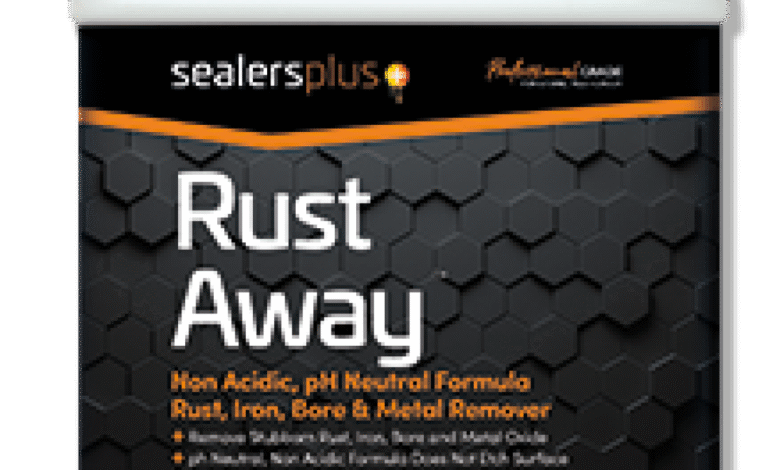Rust Away: The Complete Guide to Removing and Preventing Rust

Introduction
Rust can turn your valuable metal items into unsightly, weakened shadows of their former selves. Whether it’s your car, garden tools, or outdoor furniture, rust doesn’t discriminate it attacks any iron or steel surface given the right conditions.
The good news? rust away removal isn’t as complicated as you might think. With the right techniques and preventive measures, you can restore your metal items and protect them for years to come. This guide will walk you through everything you need to know about rust formation, removal methods, and prevention strategies.
From simple household remedies to professional-grade treatments, you’ll discover practical solutions that fit your budget and skill level. Let’s explore how to win the battle against rust once and for all.
What Is Rust?
Rust is the result of a chemical reaction called oxidation. When iron or steel comes into contact with oxygen and moisture, it forms iron oxide the reddish-brown substance we know as rust.
The process happens gradually but relentlessly. Water molecules break down into hydrogen and oxygen atoms. The oxygen atoms then bond with iron atoms in the metal, creating iron oxide. This new compound is weaker than the original metal and flakes away, exposing fresh metal underneath to continue the cycle.
Different types of rust can form depending on conditions:
- Red rust appears on iron and steel exposed to oxygen and moisture
- Yellow rust forms in low-oxygen environments with high chloride content
- Black rust develops when iron reacts with hydrogen sulfide
Temperature, humidity, salt exposure, and pH levels all affect how quickly rust develops. Coastal areas, winter road salt, and industrial environments accelerate the process significantly.
Why Is Rust a Problem?
Rust causes more than cosmetic damage it creates serious structural and financial problems that compound over time.
Structural weakness tops the list of concerns. As rust eats away at metal, it reduces thickness and strength. A rusty bridge support or car frame becomes increasingly unsafe. Even seemingly minor rust spots can spread rapidly, compromising entire structures.
Economic impact reaches billions of dollars annually. The cost of replacing rusted infrastructure, vehicles, and equipment drains resources from businesses and governments. Homeowners face expensive repairs when rust damages appliances, plumbing, or building components.
Safety hazards emerge when rust affects critical components. Rusty brake lines, structural supports, or safety equipment can fail catastrophically. Regular rust inspection and maintenance become essential for preventing accidents.
Reduced property values result from visible rust damage. Potential buyers see rust as a sign of poor maintenance and hidden problems. Addressing rust issues promptly helps maintain asset values.
Methods to Remove Rust
Multiple approaches exist for rust removal, each suited to different situations and severity levels. Understanding your options helps you choose the most effective method for your specific needs.
Mechanical Methods
Physical rust removal works well for surface rust and accessible areas. These methods require no chemicals but do demand time and effort.
Wire brushing remains one of the most common approaches. Steel wool, wire brushes, and abrasive pads scrape away loose rust and flakes. This method works best on light to moderate rust but requires significant elbow grease for heavy corrosion.
Sanding removes rust more aggressively than brushing. Use coarse sandpaper (60-80 grit) for heavy rust, then progress to finer grits for smooth finishing. Power sanders speed up the process but require careful control to avoid damaging the underlying metal.
Grinding tackles severe rust that other mechanical methods can’t handle. Angle grinders with wire wheels or abrasive discs cut through thick rust layers quickly. Always wear protective equipment and work in well-ventilated areas.
Sandblasting offers professional-level rust removal for large projects. High-pressure abrasive media strips rust completely, leaving clean metal ready for treatment. This method requires specialized equipment and expertise but delivers superior results.
Chemical Treatments
Chemical rust removers dissolve rust through acid reactions, often proving more effective than mechanical methods alone.
Phosphoric acid converts rust into a protective coating while removing loose corrosion. Many commercial rust converters use this acid as their active ingredient. Apply the solution, wait for the chemical reaction to complete, then scrub away loosened rust.
Hydrochloric acid (muriatic acid) attacks rust aggressively but requires extreme caution. This powerful acid can damage skin, eyes, and lungs while producing toxic fumes. Use only with proper ventilation, protective equipment, and emergency neutralization supplies nearby.
Oxalic acid (wood bleach) offers a gentler alternative for delicate items. This organic acid removes rust without attacking the base metal as aggressively as stronger acids. Soak rusty items in oxalic acid solution, then scrub with fine steel wool.
Commercial rust removers provide convenient, pre-formulated solutions. Products like Evapo-Rust, Naval Jelly, and CLR combine multiple acids with inhibitors to prevent over-etching. Follow manufacturer instructions carefully for best results.
Natural Remedies
Household items can effectively remove light rust without harsh chemicals or expensive tools.
White vinegar contains acetic acid that dissolves rust through prolonged contact. Submerge rusty items in vinegar for several hours or overnight, then scrub with steel wool. This method works well for small items like bolts, tools, or hardware.
Lemon juice and salt create a mild abrasive paste that tackles surface rust. The citric acid in lemon juice breaks down rust while salt provides gentle scrubbing action. Apply the mixture, let it sit for several hours, then scrub and rinse thoroughly.
Baking soda paste neutralizes acids that promote rust while providing mild abrasive cleaning. Mix baking soda with water to form a thick paste, apply to rusty areas, and scrub after 30 minutes. This method suits delicate surfaces that might be damaged by stronger treatments.
Potato and dish soap might sound unusual, but potatoes contain oxalic acid. Cut a potato in half, dip it in dish soap, and rub it on rusty surfaces. The combination provides mild acid treatment with gentle abrasion.
Preventing Rust
Stopping rust before it starts saves time, money, and frustration compared to dealing with established corrosion.
Moisture control addresses the primary cause of rust formation. Store metal items in dry locations with good ventilation. Use dehumidifiers in basements, garages, or storage areas where humidity levels stay high. Silica gel packets or moisture absorbers help protect small items in toolboxes or containers.
Protective coatings create barriers between metal and environmental factors. Paint systems provide excellent long-term protection when applied properly. Prime bare metal with rust-inhibiting primer, then apply quality topcoats. Inspect and touch up coatings annually to maintain effectiveness.
Galvanization coats steel with zinc, which corrodes preferentially to protect the underlying metal. Hot-dip galvanizing offers superior protection for outdoor applications like fencing, structural steel, and hardware.
Regular cleaning removes salt, dirt, and moisture that accelerate rust formation. Wash vehicles regularly during winter months to remove road salt. Clean garden tools after each use and dry them thoroughly before storage.
Proper storage keeps metal items away from moisture sources. Hang tools on pegboards rather than placing them on concrete floors. Use breathable covers rather than plastic tarps that trap moisture. Apply thin coats of oil or wax to tools before long-term storage.
Sacrificial anodes protect large metal structures through electrochemical action. Zinc, magnesium, or aluminum anodes corrode instead of the protected metal. This method works well for boats, water heaters, and underground pipes.
Frequently Asked Questions
Can rust come back after removal?
Yes, rust will return if the underlying causes aren’t addressed. Proper cleaning, priming, and coating application help prevent recurrence. Regular maintenance and inspection catch new rust spots before they become serious problems.
Is rust dangerous to breathe?
Rust particles can irritate respiratory systems, especially for people with asthma or allergies. Always wear dust masks when grinding or sanding rusty materials. Work in well-ventilated areas and avoid creating unnecessary dust clouds.
How long does rust removal take?
Light surface rust might disappear in minutes with the right treatment, while heavy corrosion could require days of soaking and multiple treatment cycles. Chemical treatments often work slower than mechanical methods but require less active work time.
Can I paint over rust?
Painting over rust without proper preparation leads to coating failure and accelerated corrosion. Always remove loose rust, clean the surface thoroughly, and apply appropriate primer before painting. Rust converters can treat minor rust spots before painting.
What’s the difference between rust converters and removers?
Rust removers dissolve and eliminate rust completely, leaving clean metal behind. Rust converters chemically transform rust into a protective coating that can be painted over. Choose removers for complete restoration and converters for treating rust that’s difficult to remove mechanically.
Taking Action Against Rust
Rust doesn’t have to win the battle for your metal belongings. Armed with knowledge about rust formation, removal techniques, and prevention strategies, you can protect your investments and restore damaged items effectively.
Start by assessing the rust situation on your property. Identify items that need immediate attention and prioritize based on safety and value concerns. Gather the appropriate tools and materials for your chosen removal method, always keeping safety as your top priority.
Remember that prevention pays dividends over time. Invest in quality protective coatings, maintain proper storage conditions, and establish regular inspection routines. These simple steps prevent most rust problems before they become expensive repairs.
Take action now rust never sleeps, but with consistent effort and the right approach, you can keep it rust away at bay indefinitely.



